Test: Table Charts - CAT MCQ
10 Questions MCQ Test Logical Reasoning (LR) and Data Interpretation (DI) - Test: Table Charts
Directions: The following chart represents the Foreign Exchange Reserves in different year. Analyse carefully and answer that questions follows.
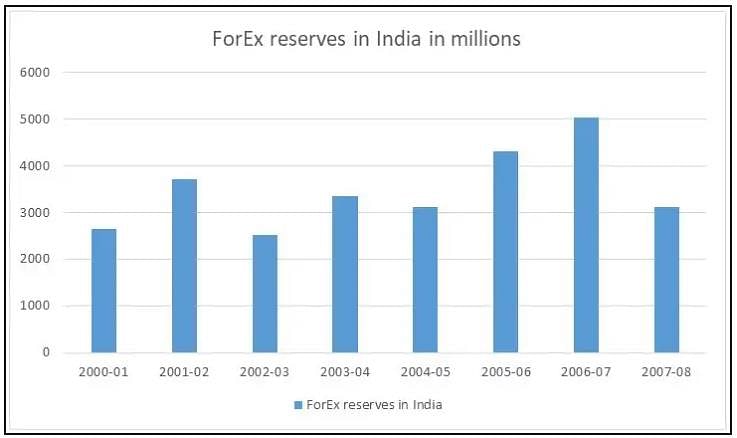
Q. The foreign exchange reserves in 2006-07 was how many times that in 2004-05?

Directions: The following chart represents the Foreign Exchange Reserves in different year. Analyse carefully and answer that questions follows.
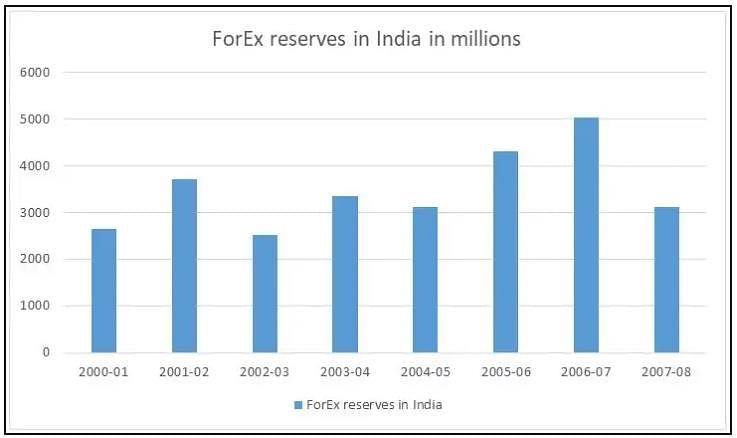
Q. The foreign exchange reserves in 2005-06 were approximately what percent of the average foreign exchange reserves over the period under review?

| 1 Crore+ students have signed up on EduRev. Have you? Download the App |
Directions: The following chart represents the Foreign Exchange Reserves in different year. Analyse carefully and answer that questions follows.
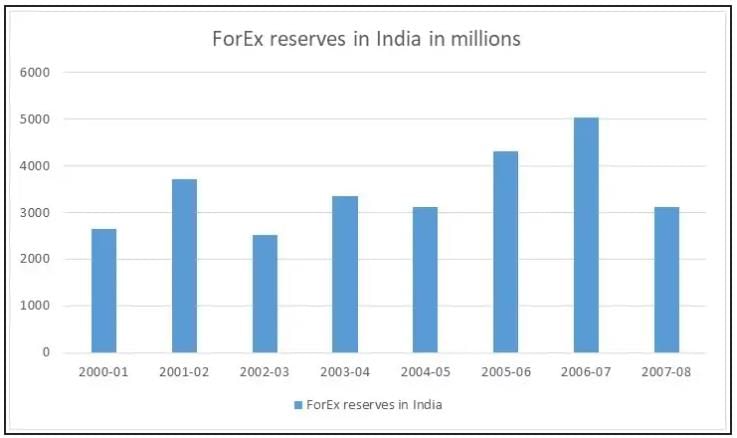
Q. The ratio of the number of years, in which the foreign exchange reserves are above the average reserves, to those in which the reserves are below the average reserves is?

Q. The ratio of the number of years, in which the foreign exchange reserves are above the average reserves, to those in which the reserves are below the average reserves is?
Directions: The following chart represents the Foreign Exchange Reserves in different year. Analyse carefully and answer that questions follows.
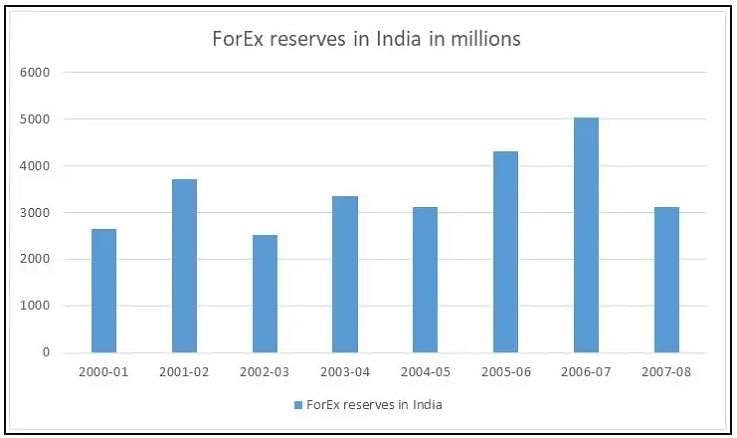
Q. For each year, the percent increase of foreign exchange reserves over the previous year, is the highest?
Directions: The following chart represents the number of students of AMS careers at its Lucknow center who passed either the CAT exam or XAT exam or CET exam or none of these exams. (Assume that there are no students who passed more than one exam.)
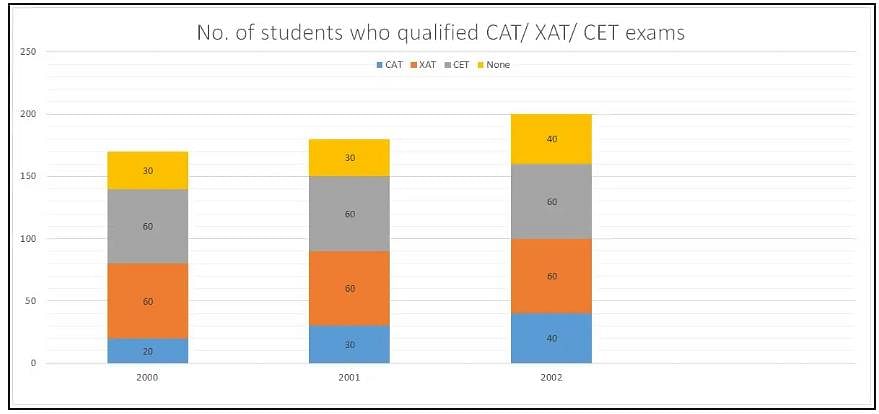
Q. What was the percentage of students who succeeded in at least one of the three exams in 2000?
Directions: The following chart represents the number of students of AMS careers at its Lucknow center who passed either the CAT exam or XAT exam or CET exam or none of these exams. (Assume that there are no students who passed more than one exam.)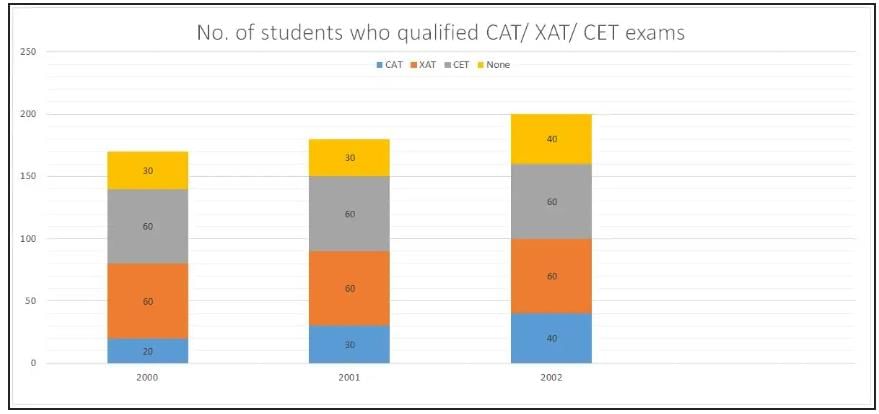
Q. What was the percentage of students who cleared CAT in 2000?
What BEST can be concluded about the students who missed the Science examination?
Who among the following did not appear for the Mathematics examination?
What BEST can be concluded about the students who did not appear for the Hindi examination?
|
88 videos|119 docs|91 tests
|
|
88 videos|119 docs|91 tests
|

















